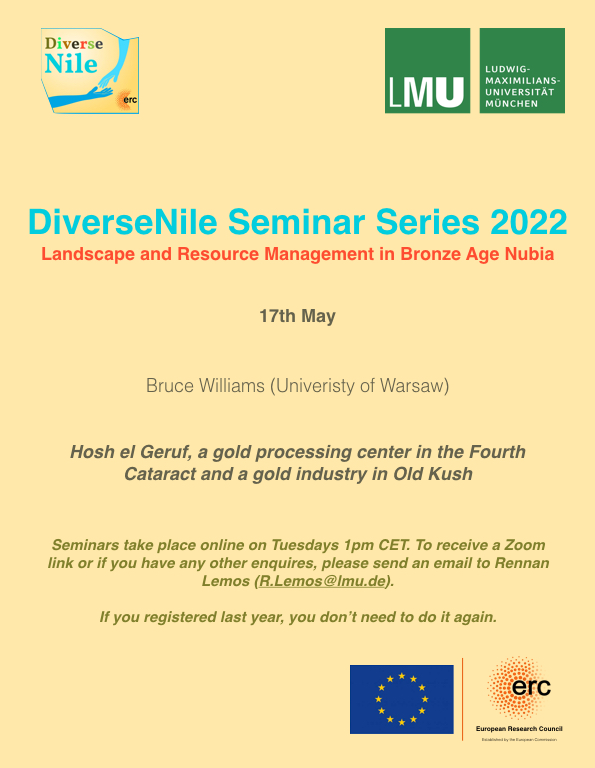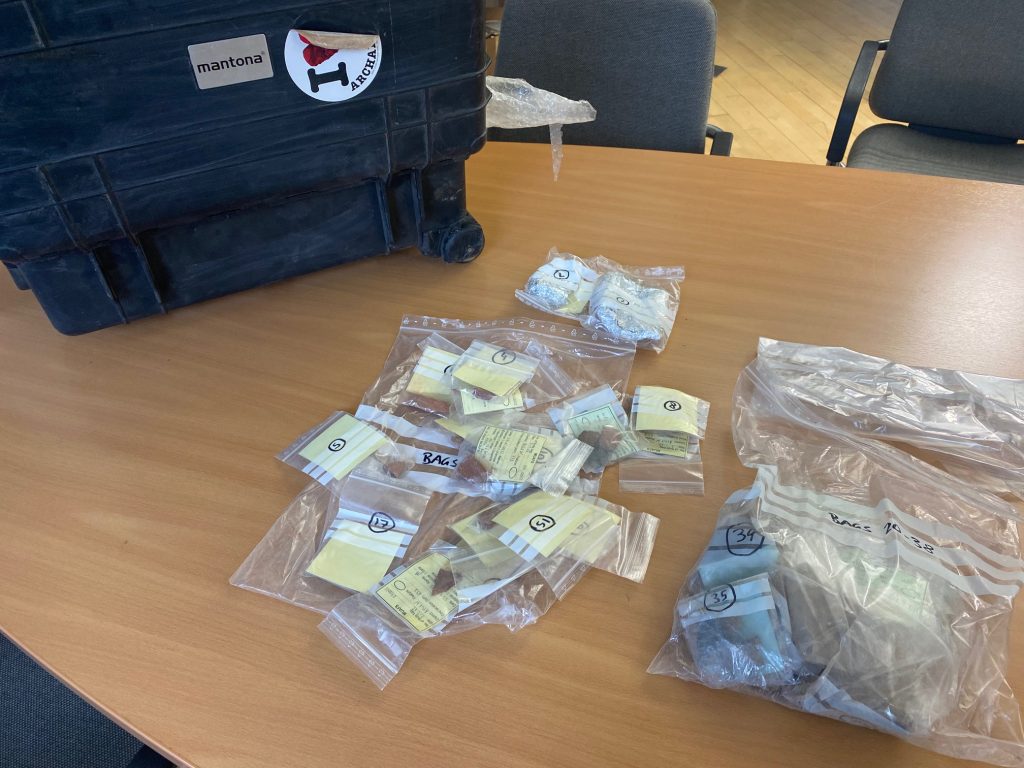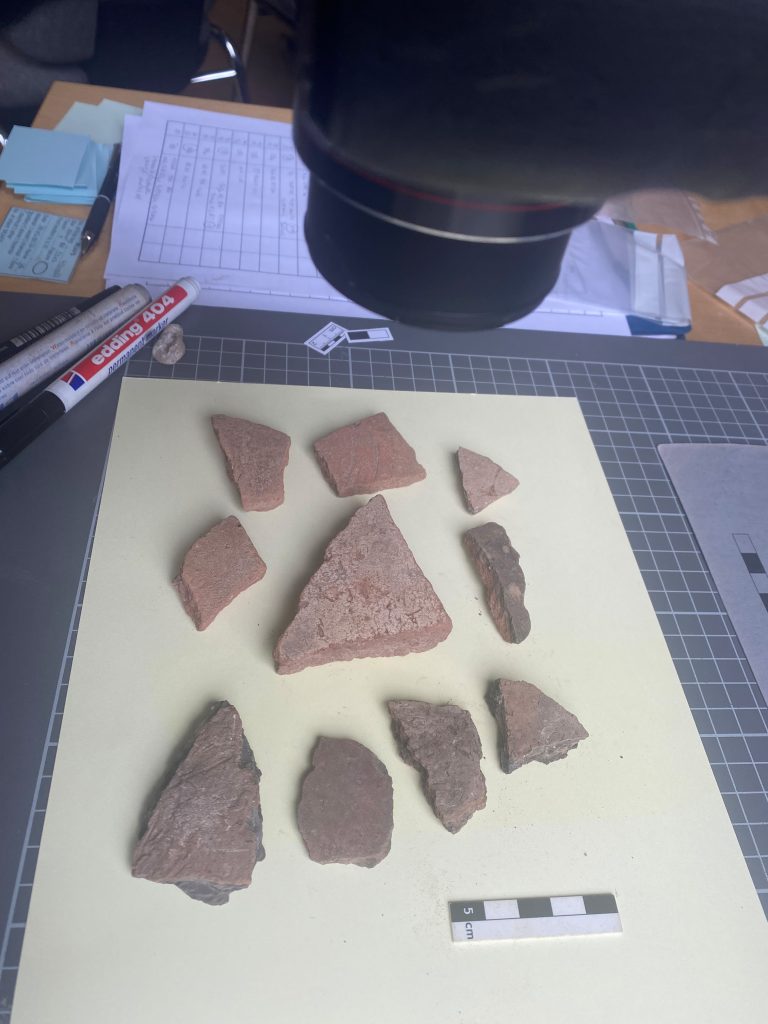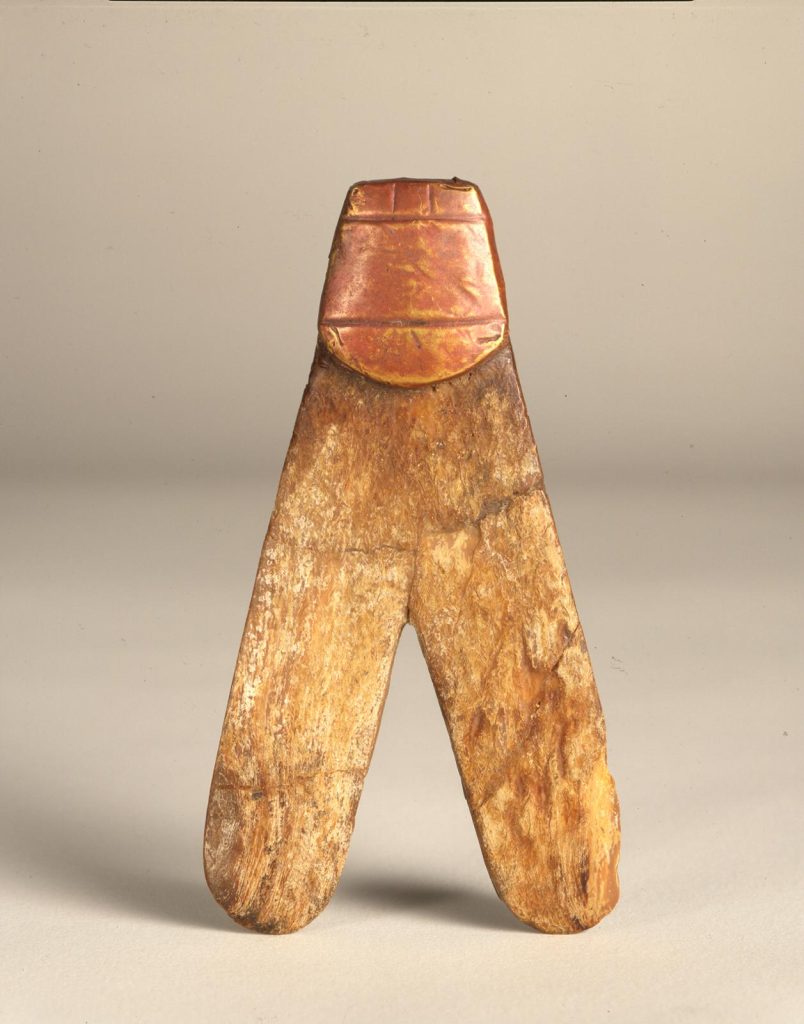One of the first associations most archaeologists have with ancient Nubia is as a source of gold. Although it is well known that raw gold was extracted from various locations across Nubia (see Klemm & Klemm 2013), the previous focus of research was on Lower Nubia, the region between the Second and Third Cataract as well as the Eastern Desert (see most recently Davies & Welsby 2020).
Recent fieldwork in the Forth Cataract region is shedding new light on Nubia’s gold production and processing in regions previously considered as marginal. Of prime importance are the excavations at Hosh el-Guruf (Emberling & Williams 2010: 22; Williams 2020: 188).
I am delighted that tomorrow’s DiverseNile Seminar will be focusing on “Hosh el Guruf, a gold processing centre on the Fourth Cataract and a gold industry in Old Kush”. Bruce Williams will present evidence from this important site which offers glimpses of early gold processing activities, among others numerous large grindstones associated with quartz crushing to extract gold.

One of the big questions about gold processing in Nubia is the origin of this grindstone technology (see Meyer 2010) – was it an innovation brought by the Egyptians or is it rather a local technique? Hosh el-Guruf has the potential to provide here answers and to illustrate the complexity of Nubian organisation of gold processing before the Egyptian colonisation (Williams 2020: 188).
I am very much looing forward to tomorrow’s lecture and highly recommend not to miss it!
References
Davies, W. Vivian & Derek A. Welsby (eds) 2020. Travelling the Korosko Road: archaeological exploration in Sudanʼs Eastern Desert. Sudan Archaeological Research Society Publication 24. Oxford: Archaeopress.
Emberling, G. & B. Williams. 2010. The Kingdom of Kush in the 4th Cataract: Archaeological Salvage of the Oriental Institute Nubian Expedition 2007 Season. Part I. Preliminary Report on the Sites of Hosh el-Guruf and El-Widay. Gdańsk Archaeological Museum and Heritage Protection Fund African Reports 7: 17–38.
Klemm, R. & D. Klemm. 2013. Gold and Gold Mining in Ancient Egypt and Nubia. Geoarchaeology of the Ancient Gold Mining Sites in the Egyptian and Sudanese Eastern Deserts. New York: Springer.
Meyer, C. 2010. The Kingdom of Kush in the 4th Cataract: Archaeological Salvage of the Oriental Institute Nubian Expedition 2007 Season. Part II. Grinding Stones and Gold Mining at Hosh el Guruf, Sudan. Gdańsk Archaeological Museum and Heritage Protection Fund African Reports 7: 39–52.
Williams, B. 2020. Kush in the Wider World during the Kerma Period, in G. Emberling & B. Williams (eds) The Oxford Handbook of Ancient Nubia: 179–200. Oxford: Oxford University Press.




